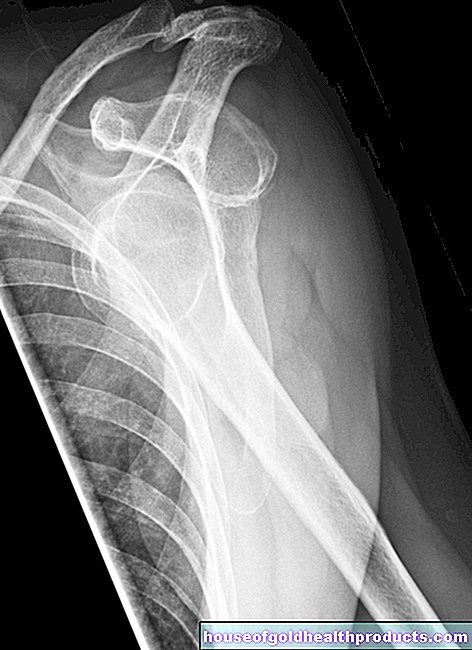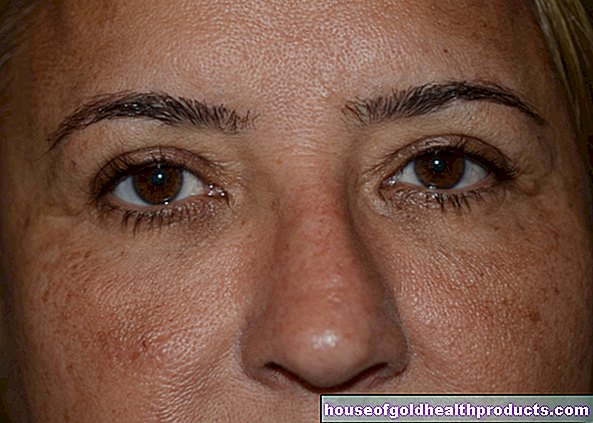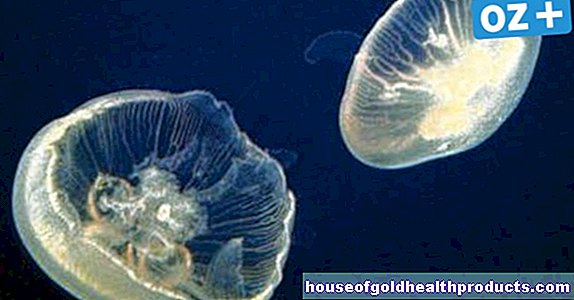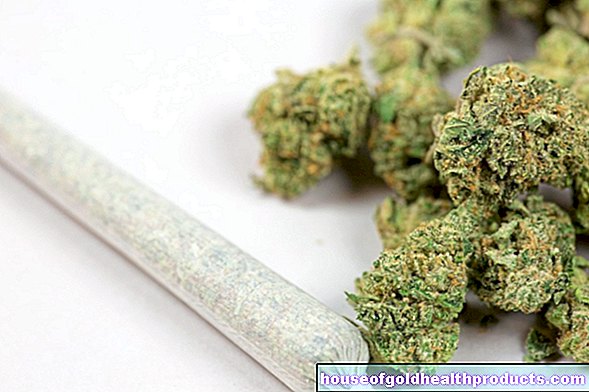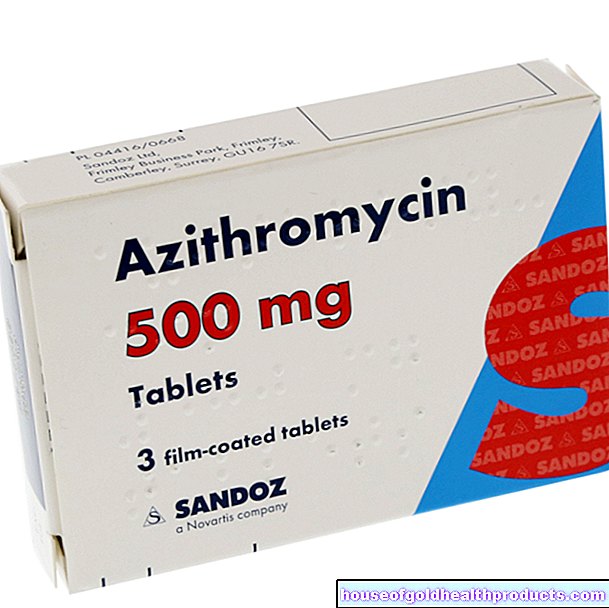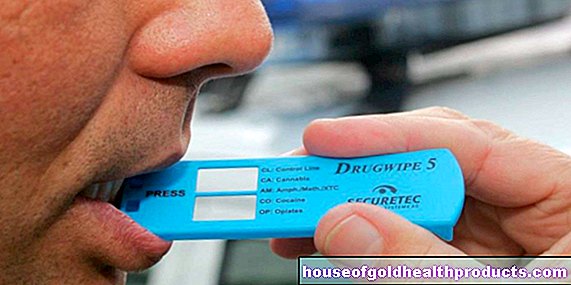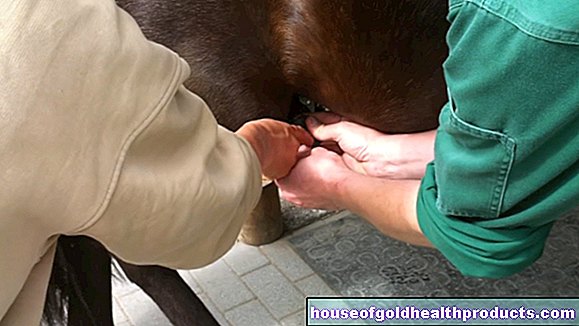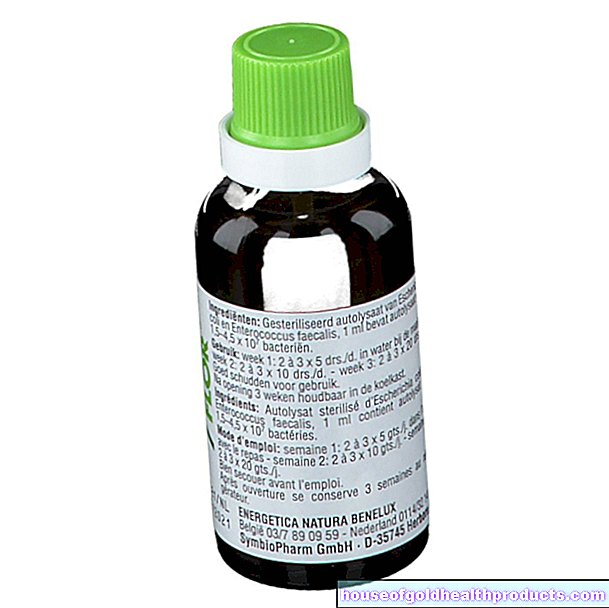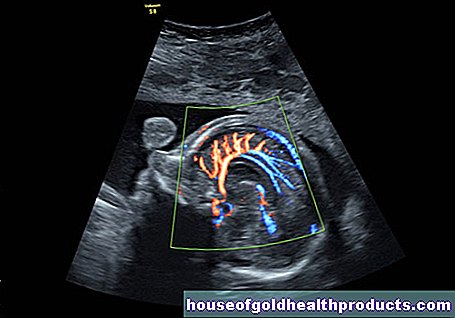Oral thrush
All content is checked by medical journalists.Oral thrush is an infection of the mouth and throat with certain yeasts - mostly Candida albicans. The mouth fungus attacks, for example, the inside of the cheeks and lips, sometimes also the tongue (tongue fungus) and the roof of the mouth. Oral thrush is characterized by whitish coatings on reddened mucous membrane, but there are also other manifestations. Here's how to recognize oral thrush and how to treat it.
ICD codes for this disease: ICD codes are internationally recognized codes for medical diagnoses. They can be found, for example, in doctor's letters or on certificates of incapacity for work. B37
Oral thrush: description
Oral thrush is a yeast infection in the mouth. It occurs relatively often in newborns and babies. Oral thrush in adults, on the other hand, mostly affects old and sick people or those who take certain medications (e.g. antibiotics).
Doctors also refer to oral thrush as oral candidiasis, as it is an infection with a fungus from the Candida-Group is treated with special anti-fungal medication (antifungal agents).
Oral thrush: symptoms
There are different forms of oral thrush. The most common is pseudomembranous candidiasis with the white, removable coatings on a reddened, inflamed oral mucosa. Burning, red mucous membranes are more rarely in the foreground (acute erythematous candidiasis) or the deposits are firmly attached to the mucous membrane (hyperplastic candidiasis).
Pseudomembranous candidiasis
The classic symptom of this form of oral thrush is severely reddened oral mucous membranes on which white specks lie on top. In the beginning, these speckles look like small, milky-white speckles. They are often found on the inside of the cheeks and lips, but also on the roof of the mouth or under the tongue (tongue fungus). The fungi often nestle in the mouth under a denture.
The small, white deposits can usually be wiped off easily, and a red, shiny area appears underneath them. In the further course the specks multiply and enlarge and sometimes flow together to form larger white spots. When you peel it off, the skin underneath begins to bleed easily.
Sometimes the mouth fungus spreads to the throat and esophagus.
In addition, this form of oral thrush can cause the following symptoms:
- Sensation of "furry" and dryness in the mouth
- increased thirst
- Taste disorders (possibly metallic taste)
- Bad breath
- burning sensation on the lining of the mouth
In many cases, however, these symptoms do not even occur as long as the mouth fungus is still in the early stages. However, oral thrush is often so uncomfortable for babies that they no longer want to drink. When the yeast spreads in the mouth, the baby can sometimes develop fungal deposits on the lips or in the corners of the mouth.
Acute erythematous candidiasis
In this rarer form of thrush, the mouth (and throat) are not marked with white coatings. Instead, there is mainly a strong reddening of the mucous membranes and a burning sensation in the mouth. The back of the tongue in particular is often affected. Acute erythematous candidiasis develops primarily with antibiotic therapy or with HIV infection, often as a result of pseudomembranous candidiasis.
Hyperplastic candidiasis
In chronic hyperplastic candidiasis (also: Candida leukopathy), white deposits with red edges adhering to the mucous membrane and tongue are found, which cannot be easily removed. This form of oral thrush is more common in people with immune system disorders and can persist for months or years.
Oral thrush: causes and risk factors
Oral thrush usually goes along with an infection Candida albicans back, a widespread fungus in the yeast family. It can be found in the oral cavity in around 50 percent of healthy people, and it is also common in the intestines and on various mucous membranes.
A so-called opportunistic infection can develop from this normal colonization in people with a weakened immune system: the fungi use a gap in the immune system and begin to multiply strongly. This is why oral thrush is typical in newborns and babies who do not yet have a strong immune system.
But older children and adults can also develop a fungal infection in the mouth - especially if the defense is suppressed by certain drugs or weakened as a result of an illness. Elderly people with missing teeth and dentures are also at risk.
Next to Candida albicans Oral thrush can also be caused by other yeasts like Candida tropicalis (in soil, excrement, on fish, in kefir, yoghurt) and Candida stellatoidea to be triggered. However, these fungi rarely colonize the oral cavity in humans.
Oral thrush: Baby is usually infected with mom
Newborns with oral thrush are usually infected at birth - through a possibly unnoticed vaginal thrush in the mother. The fungus in the mouth generally shows up in the first few days of life. Older babies, for example, get infected through pacifiers that have come into contact with the saliva of a caregiver.
Risk factors
In the course of their lives, almost everyone comes with me once Candida albicans in contact, but infection only breaks out under certain circumstances. In addition to very low and very old age, other risk factors for mouth fungus are:
- HIV infection and AIDS disease
- Diabetes mellitus
- Cancer diseases (e.g. leukemia, Hodgkin's disease)
- acute infectious diseases (e.g. pneumonia)
- Medicines: antibiotics, chemotherapy drugs, asthma sprays containing cortisone
- Nutrient deficiencies (e.g. iron deficiency, vitamin B deficiency)
- decreased saliva production
- Nicotine use
- Dentures and other forms of dentures
Oral thrush: examinations and diagnosis
The diagnosis of oral thrush can be made by a dentist, a pediatrician, a dermatologist or a general practitioner. To collect the medical history (anamnesis), the doctor asks the person concerned (or, in the case of babies, the mother or another caregiver) which symptoms have existed and since when. He also asks whether there are previous illnesses or whether the patient is taking any medication.
The most important factor in diagnosing mouth fungus is the clinical picture. The doctor usually recognizes at first glance if there is thrush in the mouth - the white specks that are present in most cases are characteristic. If necessary, however, there is a risk of confusion with leukoplakia - a tumor precursor. With a wooden spatula, the doctor carefully scrapes off the plaque at one point to check how the mucous membrane under the oral thrush sticks is behaving. If the typical red, shiny area is found, he can quickly diagnose pseudomembranous candidiasis.
If the fungus in the mouth shows an untypical picture, diagnosis is not that easy. In any case, it makes sense to confirm the diagnosis of oral thrush by swabbing the affected mucous membrane. In this way, the pathogens can be detected under the microscope.
A blood analysis reveals antibodies against the Candida fungus in the case of oral thrush. In most cases, however, a blood sample is not necessary for the diagnosis.
Oral thrush: treatment
For oral thrush treatment, the doctor prescribes special antifungal agents (antimycotics) that are suitable for the mouth and throat area. These include, for example, the active ingredients amphotericin B and nystatin. They can be used in the form of lozenges, oral gel, solution or suspension (liquid with a pipette).
It is important that you adhere to the intended duration of treatment and that you do not stop the therapy prematurely as soon as you can no longer see any fungal deposits. In addition, if you have a fungal infection in the mouth, ensure that you practice your oral hygiene properly. If your baby suffers from mouth fungus, you should replace all pacifiers and bottle nipples, or at least sterilize them thoroughly.
Oral thrush: disease course and prognosis
If the therapy is carried out consistently, oral thrush can usually be treated well. In rare cases, however, the fungus can persist in the mouth and keep returning. Then the doctor sometimes prescribes a stronger antifungal medicine that is also effective in the rest of the digestive tract - especially in the intestines. This can usually also be used to master stubborn oral thrush.
Oral thrush: prevention
There are a number of things you can do to prevent oral thrush - for yourself or your child:
- In babies and toddlers, hygiene is particularly important to prevent oral thrush. Clean pacifiers, teats and bite toys regularly and avoid using your own saliva, for example, to "clean" pacifiers that have fallen down.
- If you have dentures, take great care to ensure that they are properly seated. Cleanse them thoroughly after every meal and practice careful oral hygiene to prevent oral thrush.
- If you have an immune deficiency and keep developing thrush in your mouth, it may be a good idea to use an antifungal drug every day as a preventive measure. Be sure to discuss this with your doctor.
- Vaginal thrush can be transmitted from mother to baby at birth and cause oral thrush in the newborn. If you are pregnant, any Candida infections should therefore be treated before the birth.
- Very sick and old patients who are artificially fed usually have so little salivation that bacteria and fungi multiply quickly in the mouth. Elderly and nurses therefore practice so-called thrush and parotitis prophylaxis, for example by regularly moistening the mucous membranes of the person being cared for. This prevents oral thrush and inflammation of the parotid glands (parotitis).
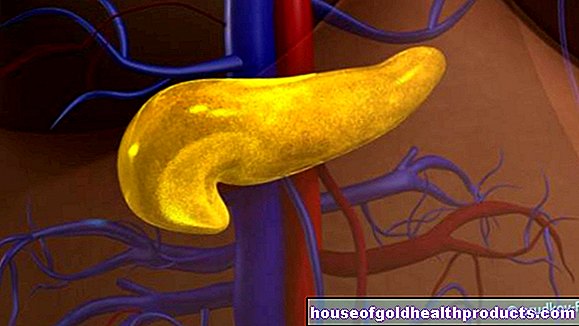

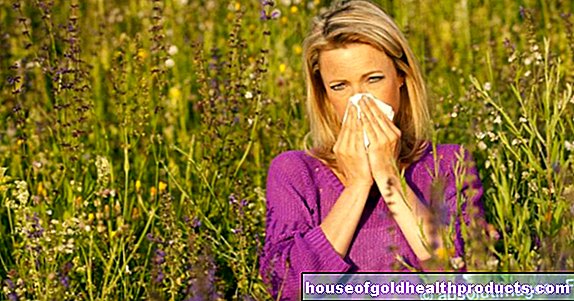
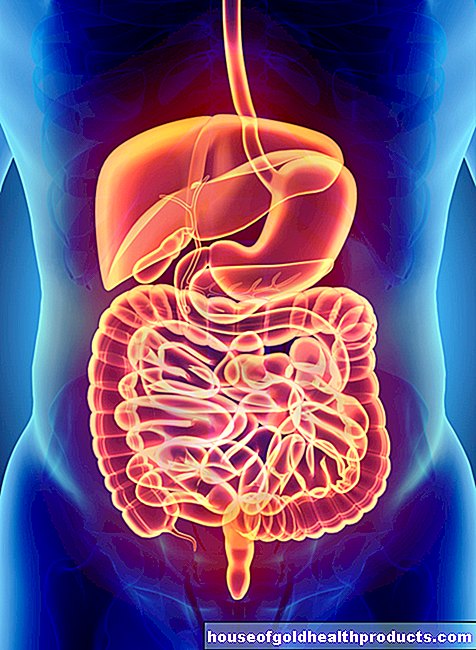

.jpg)
